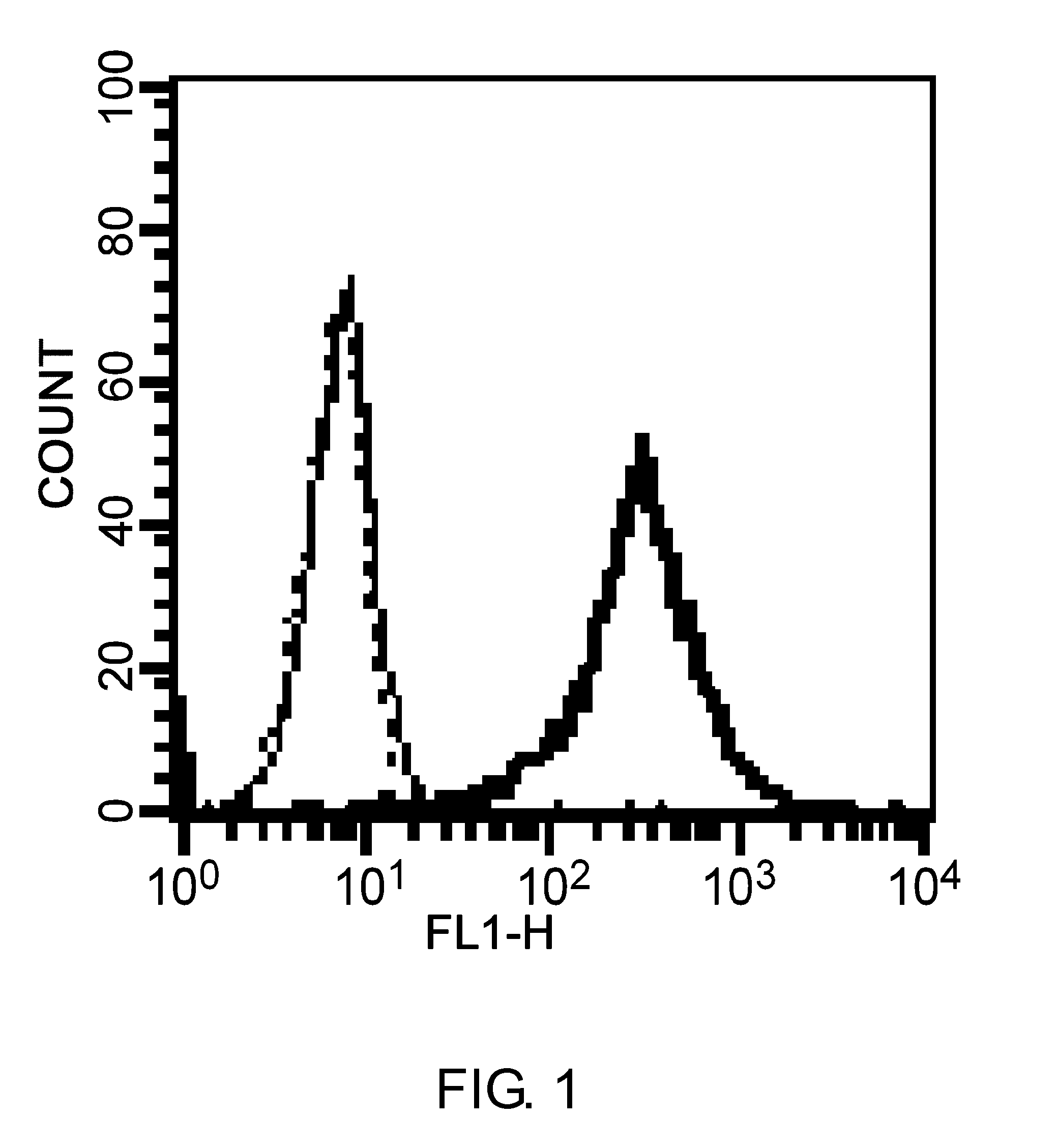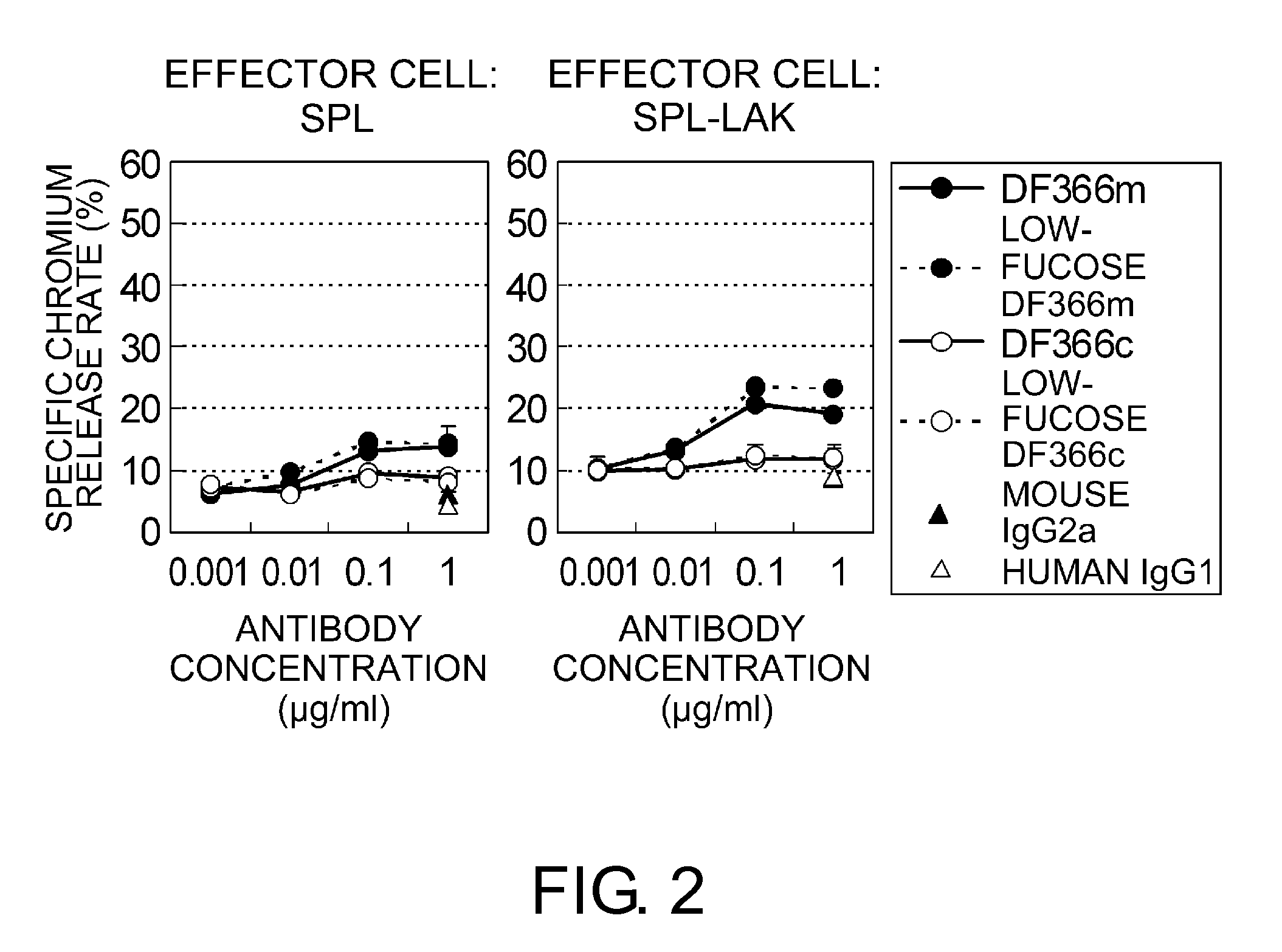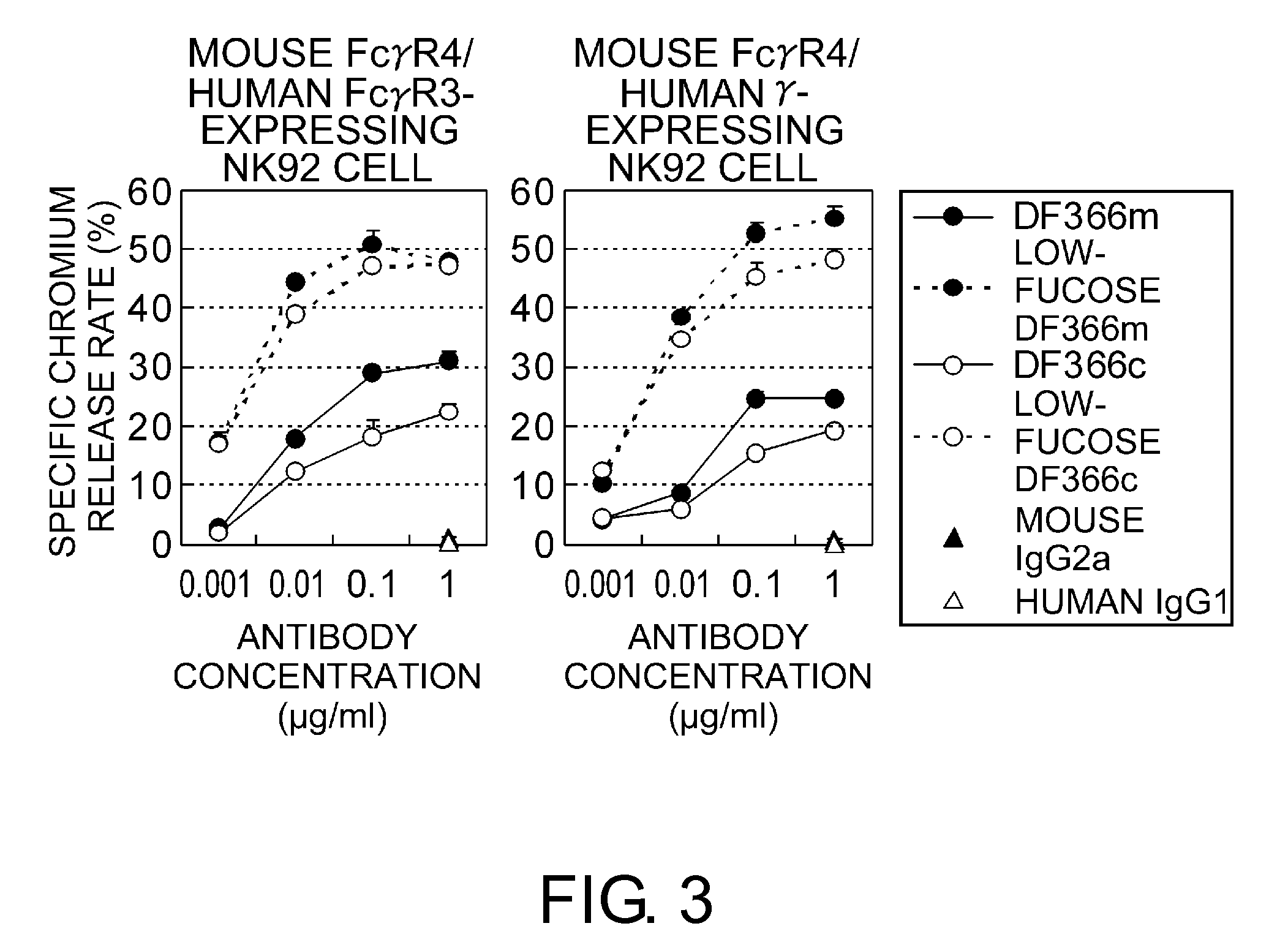Chimeric Fc-gamma Receptor and Method for Determination of ADCC Activity by Using the Receptor
- Summary
- Abstract
- Description
- Claims
- Application Information
AI Technical Summary
Benefits of technology
Problems solved by technology
Method used
Image
Examples
example 1
Establishment of FcγR-Expressing NK92 Cell Lines
1-1) Construction of Mouse FcγR4 Expression Vector
[0141]Using mouse spleen cDNA (Clontech) as a template, the mouse FcγR4 gene was amplified by PCR utilizing a sense primer containing an EcoRI restriction enzyme sequence (mFcR4-EcoRI-F, SEQ ID NO: 17) and an antisense primer containing a NotI restriction enzyme sequence (mFcR4-NotI-R, SEQ ID NO: 18). After treatment with the EcoRI and NotI restriction enzymes, the amplified product was cloned into the EcoRI-NotI site of the pMCDN plasmid for expression in mammalian cells to produce pMCDN / mFcR4. The pMCDN vector, into which the neomycin resistance gene and the DHFR gene are inserted, enables induced expression under the control of the mouse CMV promoter (Accession No. U68299). The nucleotide sequence cloned was determined by sequencing using an AB13730 DNA sequencer. The nucleotide sequence and the amino acid sequence of mouse FcγR4 are shown in SEQ ID NOs: 3 and 4, respectively. Compar...
example 2
Preparation of Anti-Human Desmoglein 3 Antibody
2-1) Establishment of a Human Desmoglein 3 Expression Cell Line
[0147]A CHO cell line stably expressing human desmoglein 3 (DSG3) (DSG3-DG44) was established by digesting the pMCN / DSG3 plasmid for expression in mammalian cells, into which the DSG3 gene (nucleotide sequence: SEQ ID NO: 31; amino acid sequence: SEQ ID NO: 32) has been inserted, with the Pvu I restriction enzyme, then introducing the digested plasmid into the CHO DG44 cell line (Invitrogen) by electroporation, and selecting the cells with 500 μg / mL Geneticin. pMCN enables induced expression under the control of the mouse CMV promoter (Accession No. U68299), and is a vector into which the neomycin resistance gene has been inserted. DSG3-DG44 cells were incubated in CHO-S-SFM II medium (Invitrogen) containing 500 μg / mL Geneticin, HT supplement (Invitrogen), and penicillin / streptomycin.
2-2) Preparation of soluble Human Desmoglein 3 / Mouse IgG2a-Fc Fusion Protein
[0148]Soluble hu...
example 3
Measurement of the ADCC Activity of Anti-DSG3 Antibody
3-1) Establishment of the Target Cell Line
[0159]DSG3-Ba / F3, a Ba / F3 cell line stably expressing DSG3, was established by digesting, with the PvuI restriction enzyme, the pMCDN / DSG3 plasmid for expression in mammalian cells, into which the human desmoglein 3 (DSG3) gene (nucleotide sequence: SEQ ID NO: 31; amino acid sequence: SEQ ID NO: 32) has been inserted, then introducing the digested plasmid into Ba / F3 cells (purchased from RIKEN BioResource Center) by electroporation, and selecting the cells with 500 μg / mL Geneticin. DSG3-Ba / F3 cells were incubated using RPMI 1640 medium (Invitrogen) containing 500 μg / mL Geneticin, penicillin / streptomycin, recombinant mouse interleukin-3 (R&D Systems), and 10% FBS.
[0160]Expression of DSG3 was determined by flow cytometry (FIG. 1). Specifically, DSG3-Ba / F3 cells were reacted with 10 μg / mL of an anti-DSG3 monoclonal antibody (R&D Systems) or a negative control antibody (mouse IgG2a, Becton Di...
PUM
| Property | Measurement | Unit |
|---|---|---|
| Cell angle | aaaaa | aaaaa |
Abstract
Description
Claims
Application Information
 Login to View More
Login to View More - R&D
- Intellectual Property
- Life Sciences
- Materials
- Tech Scout
- Unparalleled Data Quality
- Higher Quality Content
- 60% Fewer Hallucinations
Browse by: Latest US Patents, China's latest patents, Technical Efficacy Thesaurus, Application Domain, Technology Topic, Popular Technical Reports.
© 2025 PatSnap. All rights reserved.Legal|Privacy policy|Modern Slavery Act Transparency Statement|Sitemap|About US| Contact US: help@patsnap.com



